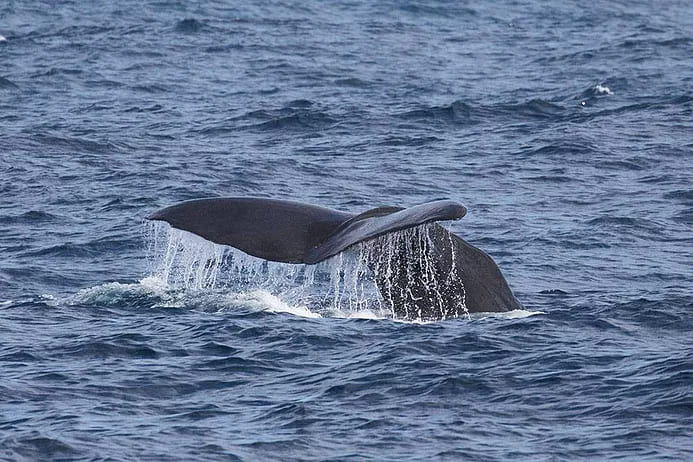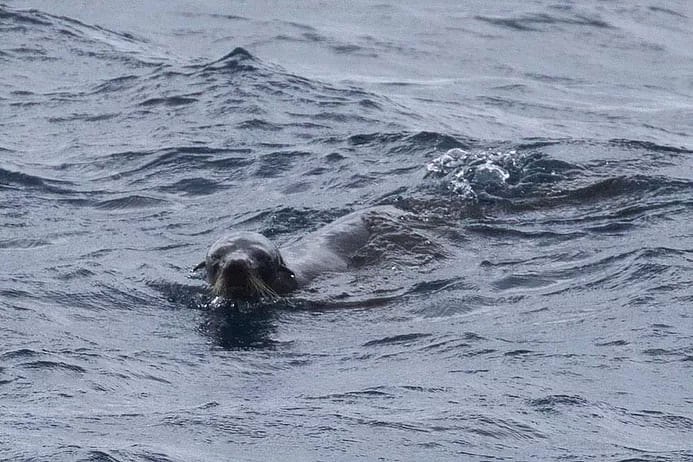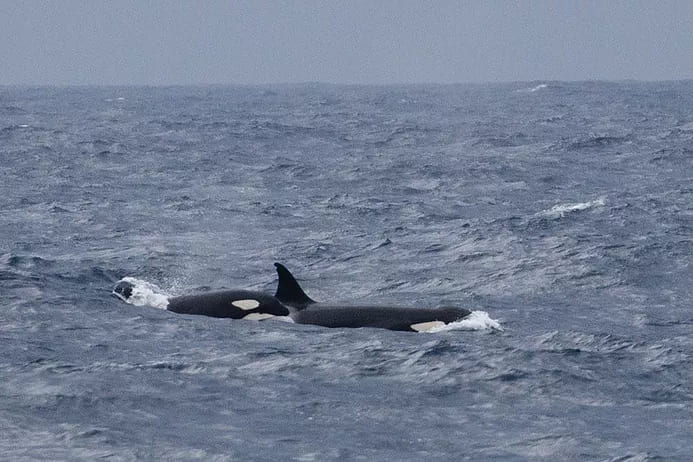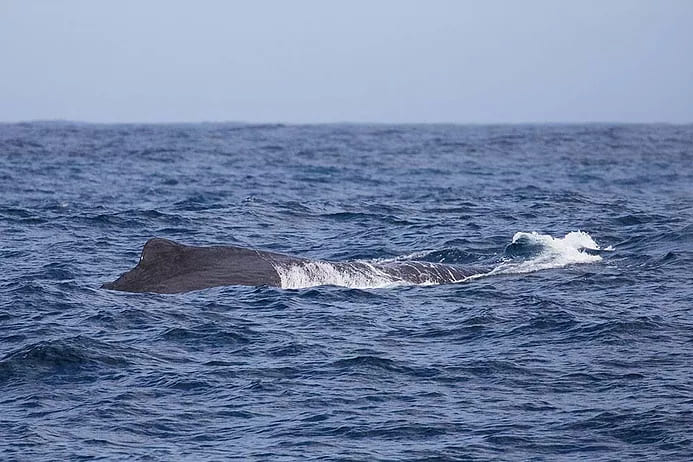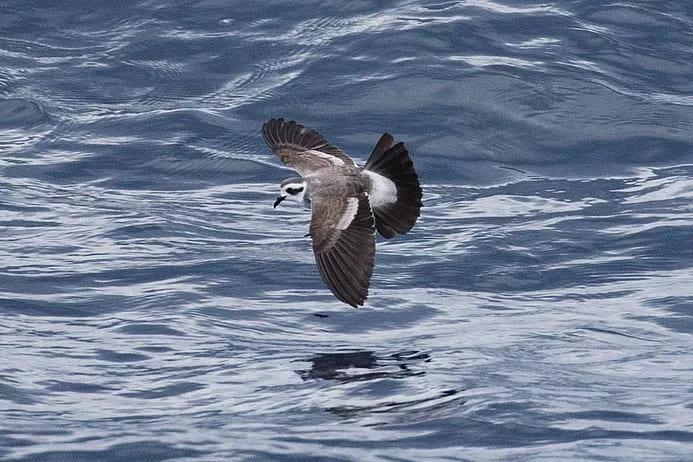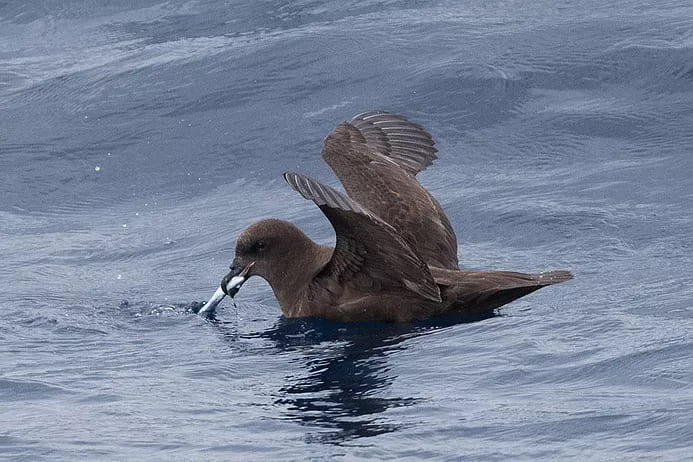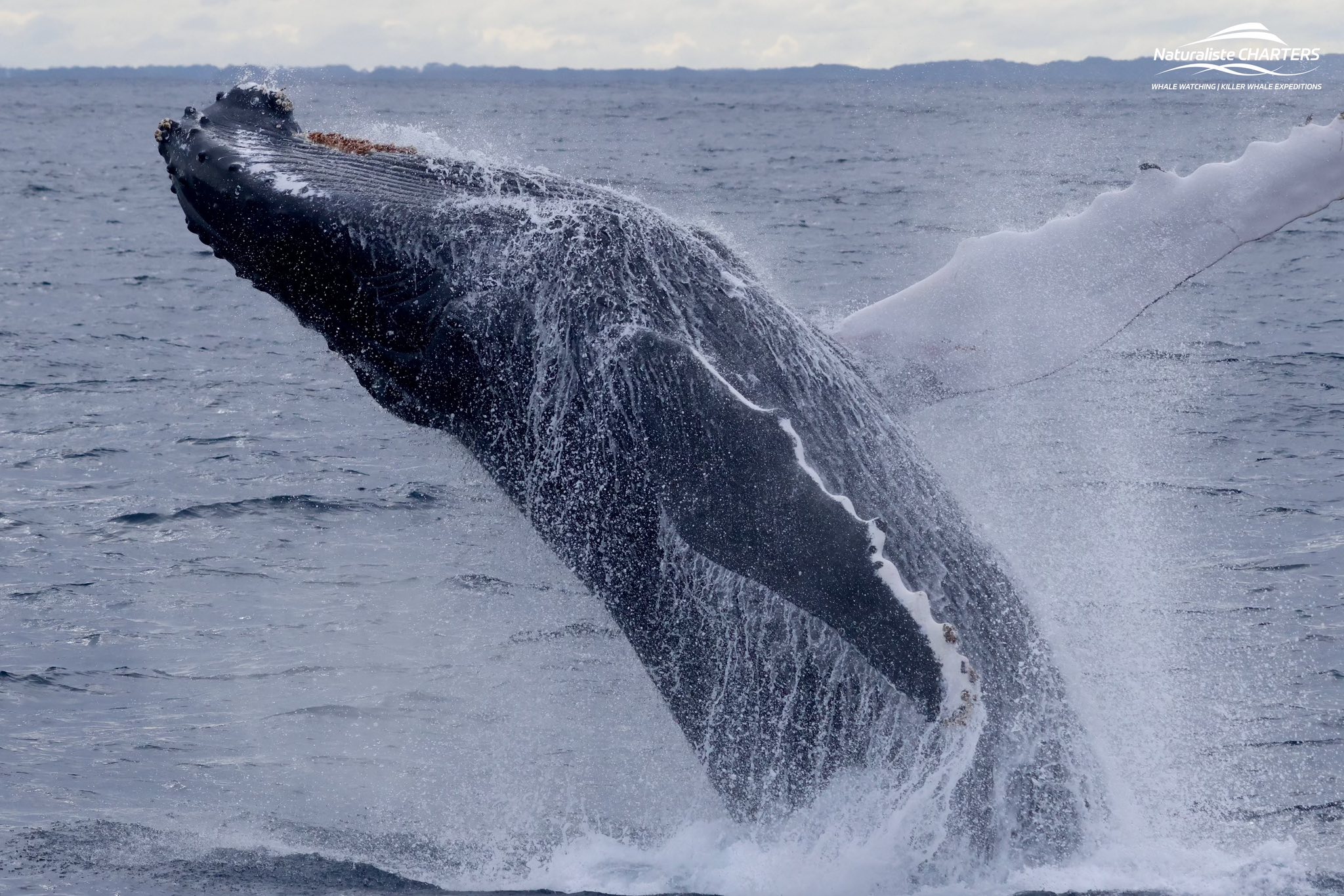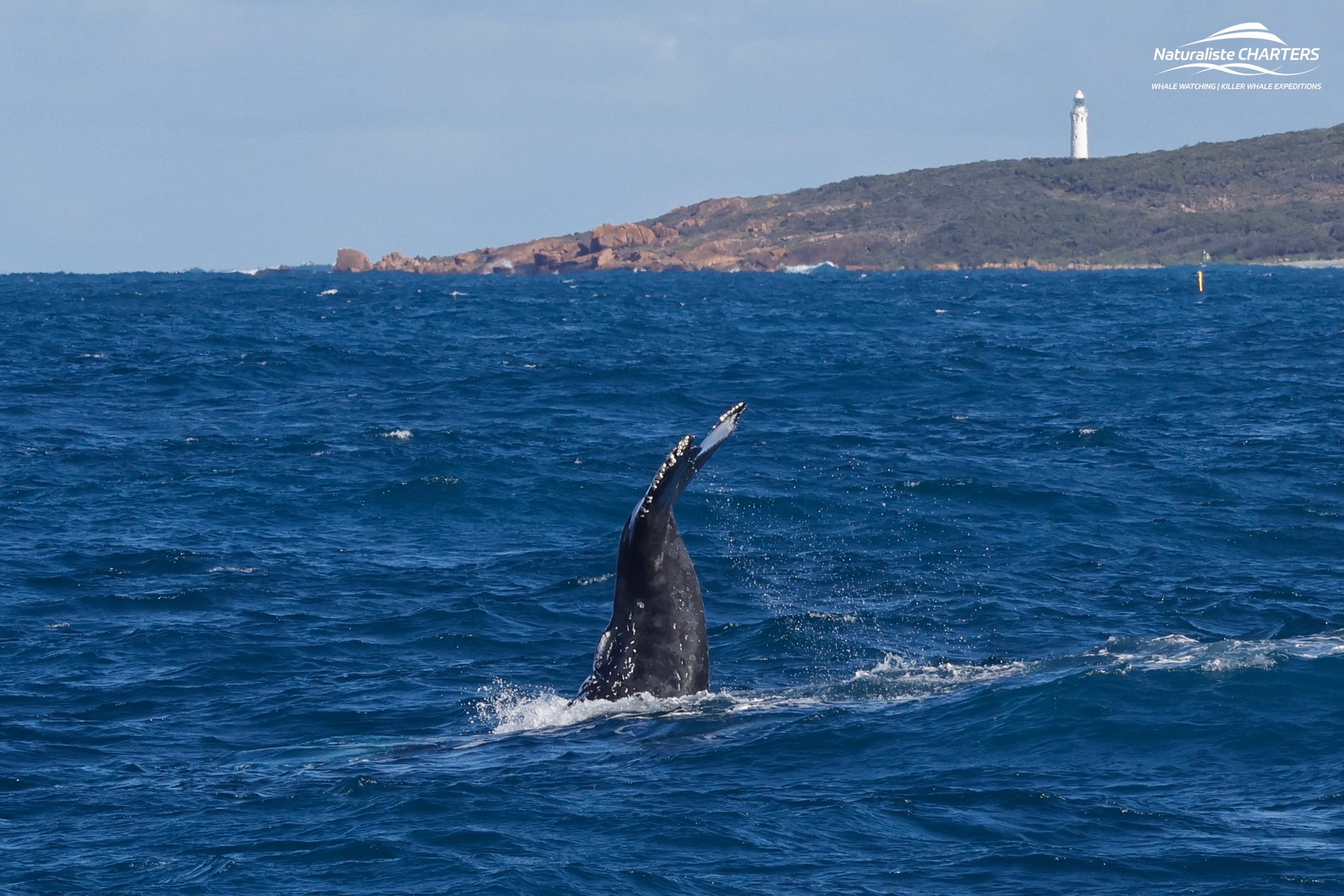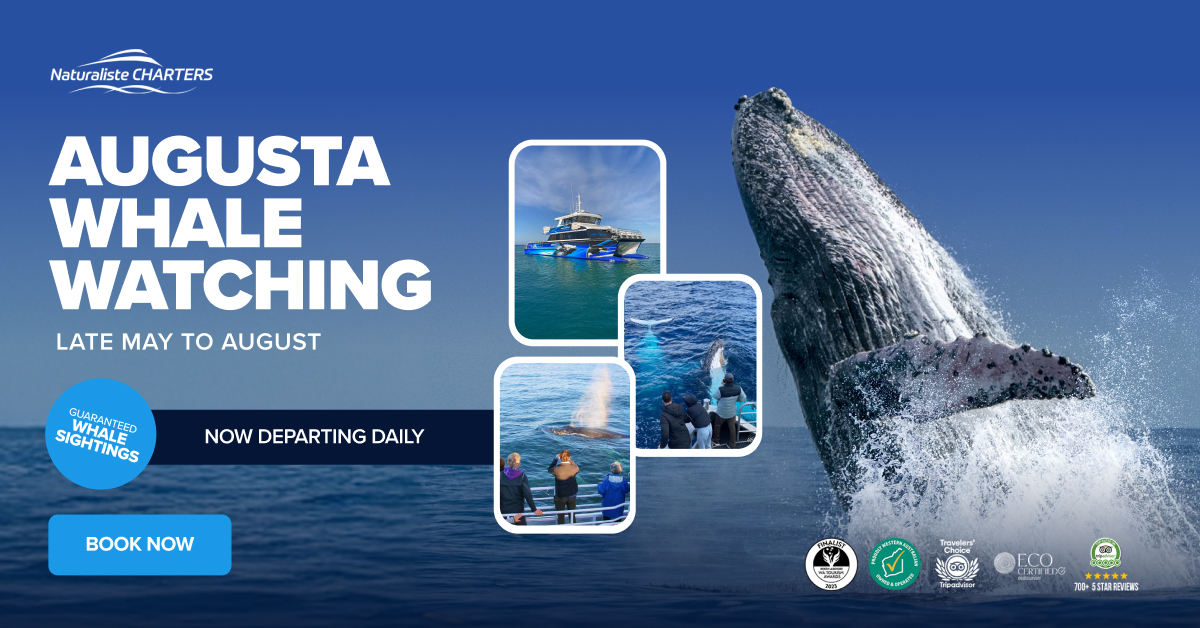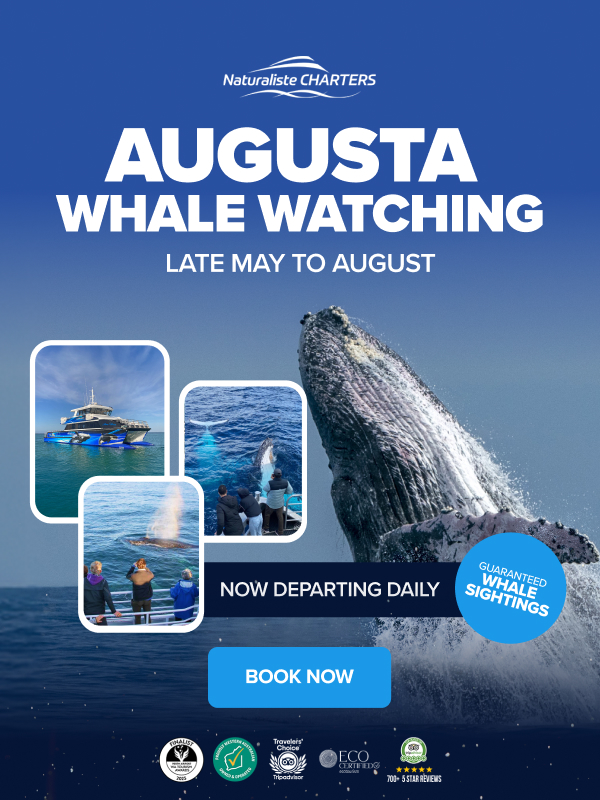It was quiet day out in the canyon today, navigating our way to the 1000m drop off through foggy conditions of low-lying clouds and misty rain we spotted Orca straight off the shelf. The quick detection fooled us into thinking it would be an easy day, however due to the canyons conditions and resident’s behaviour varying daily, you just never know what to expect. Lucky for us we did find them early, managing to remain with them for a short while as they comfortably made their way through the canyon surfacing few times before making themselves totally scarce and taking a deep dive. We had lost them, not knowing whether they would resurface we tracked westwards, scanning the horizons for any other distant blows. As Orcas are capable of hold their breathe for over 15 minutes they can travel out of eyesight in one breath hold.
As the heavens opened releasing heavy rains we continued our search westwards firstly coming across a New Zealand fur seal. The fur seal was resting at the surface stretching its fore limbs and thermoregulating (warming up). It didn’t seem to pay too much attention to our vessel of curious passengers clicking away at their cameras and instead rolled about on the surface before slowly submerging. New Zealand fur seals have been documented as being part of Orca’s diet in other parts of the world, however here in the Bremer Canyon no such information has been confirmed.
Leaving the fur seal behind we persisted on our voyage to find a sperm whale! The call for the angled blow echoed through the radio and we pulled up alongside the ~14m animal. Sperm whales have a blow hole angled to the left with the bushy blow reaching 6-8 ft in the air. They log at the surface to reinflate their lungs and return the oxygenated blood to their extremities before diving down to depths of up to 2000m to hunt for giant squid. At these dark depths little to no light penetrates and so they need to rely on their ability to echolocate to find and locate food. Sperm whales echolocate by producing a series of loud clicks that reflect off objects, return and is interpreted by the whale. This technique allows them to essentially determine the distance and size of their prey.
The encounter with the sperm whale concluded our trip out to the canyon as we made our way back in to shore dreaming of the hot showers tonight!
Until tomorrow
Naturaliste Charters

